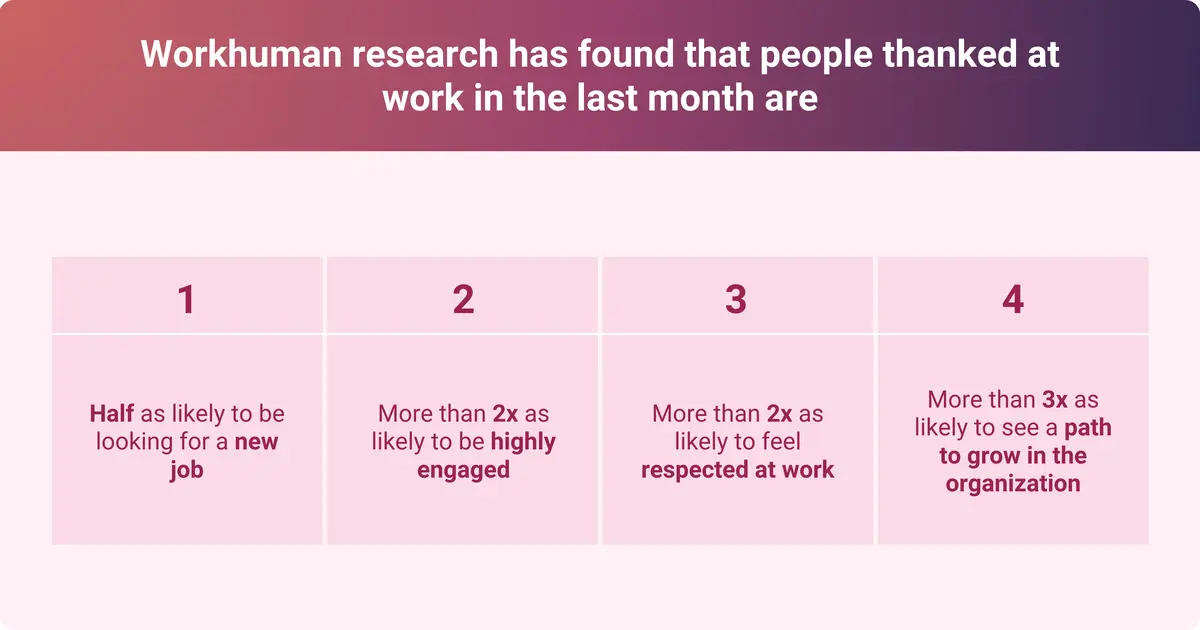What Makes a Good Team? The Key Elements of Successful Teamwork

It seems obvious that successful teamwork leads to more profitable businesses, but the trick is implementing practices that make your team want to work together. According to research by Gallup on improving teamworkOpens in a new tab, strong teams create an environment for better performance and engagement.
This leads to 78% lower absenteeism, 23% higher profitability, 18% higher productivity, and 21% less turnover. If you're wrestling with the question, "What makes a good team?" read on for unique, research-backed insights for cultivating highly effective teams.
What makes a great team?
So, what are the characteristics of high-performing teams? They foster innovation, collaboration, and efficiency. Communication is also vital to successful teamwork, and teams that communicate effectively, share the same vision, and support each other are significantly more successful than those that don’t.
CNBC cites a study on the importance of work familiesOpens in a new tab, showing that 83% of employees in the US said they feel happier because of their work family, and 69% feel they do their work better because of solid team connections.
What are the key components of a successful team?
Many things set a mediocre team apart from a successful one. Every industry is different, and leaders may need to tweak their qualities to ensure they are making the most of their workers.
The right combination of skills, personalities, and structures contribute most to team effectiveness. Let’s go over the key components of successful teams in more detail.
Effective communication among team members
Effective communication is essential in any team, whether it be marriages, friendships, or work relationships. This means transparency and continuous conversations.
Trust is the foundational principle of teamwork. Active listening and feedback, honesty and transparency, and strong relationships all come together to build a strong base for a team.
Communication increases productivity through more efficient collaboration, reduced misunderstandings, increased accountability, higher engagement and morale, and improved problem-solving.
Diversity of perspectives
When teams have more diverse perspectives, they develop innovative solutions, make better decisions, and have an inclusive team culture.
Workhuman research shows that companies with strong inclusion practices see 35% higher financial returns. Make a conscious effort to include diverse dynamics in your team to make sure you're getting the best there is from all demographics.
Diverse teams not only bring a range of perspectives and experiences to a problem but also open up those avenues to those who haven’t seen them before.
Understanding someone different from you takes effort, but it also aids in developing skills that enhance communication between team members. The more diverse your team is, the wider your range of ideas and expertise.
Workhuman created a list of four ways to diversify your team successfully.
- Improved inclusion: Be mindful of the language you use and employ technology like Worhuman’s Inclusion Advisor, an AI tool that flags unconscious bias in written messages.
- Equitable talent development: Focus on equity in lower-level positions to bridge the gap between those who start in higher positions and those who start at the entry level.
- Continuous feedback: Ditch the once-a-year performance review mindset and settle into a continuous feedback loop, acknowledging that inclusion initiatives need constant adjustment.
- Rewards and recognitions: Improve employee psychological safety, wellness, and sense of belonging through regular rewards and recognitions, especially for those who help reshape your organization.

Shared goals and purpose
There’s no better way to enhance your team's success and mindset than to develop an objective or vision that aligns with your team members. These visions differ from department to department, meaning good leaders are important in all divisions.
If you want to improve engagement and productivity, set clear expectations and define success with your project teams. This fosters accountability and gives employees a tangible sense of purpose. As employees better understand the organization's overall vision, they should be able to link their daily tasks to fulfilling it.
Effective team leadership
A good team starts with a good team leader. There are many types of leadership, including servant, participative, transactional, purpose-driven, authoritative, delegative, and transformational. A purpose-driven or servant leadership style is ideal for fostering strong team-building.
Leadership impacts team dynamics through motivation, communication, trust and respect, collaboration, and conflict resolution. Good leaders have a positive effect on performance, morale, adaptability, growth, and innovation.
Good leaders place trust and confidence in their team members. They set clear expectations, delegate tasks, and offer autonomy. This shows trust in the individual’s ability to do their job.
Good leaders support their team members by providing resources and tools, addressing challenges head-on, encouraging growth, and promoting a positive work environment. They inspire when they lead by example, celebrate success, and display enthusiasm and passion.
Mutual respect and trust
Mutual respect between team leaders and members creates an environment where employees are valued and motivated. If their ideas are constantly shot down or ridiculed, they are less likely to offer more. Leaders who show their employees respect make them want to give their best to the organization.
Psychological safety is a core requirement for a productive workplace. A study by the Center for Creative Leadership on how leaders can foster psychological safetyOpens in a new tab reports that teams with higher degrees of psychological safety have lower levels of interpersonal conflict and higher levels of performance.
A psychologically safe workplace can unlock the contributions of the entire team by making team members feel comfortable and safe. Good leaders show genuine curiosity, talk openly about psychological safety, and create space for new, wild ideas.
Frequent feedback and recognition
The traditional annual review is becoming obsolete because it’s biased, infrequent, and one-directional. Workhuman research on the state of annual reviews shows that evaluations occur annually in 31% of companies, bi-annually in 18% of companies, and quarterly or monthly in 38%.
Continuous, peer-driven recognition and feedback through programs like Workhuman Conversations allow for immediate correction of problematic behaviors and stop resentment before it starts.
Employees who receive regular feedback are 18 times more likely to seek feedback proactively. As you research ways to provide feedback on individual performance vs team performance, consider these six steps to create a continuous feedback cycle.
- Flip the focus: Many reviews focus on the past, while feedback should now look toward the future.
- Teach and learn: Give feedback about teaching and learning rather than discipline or punishment.
- Approach feedback positively: Feedback presented in a thoughtful, committed, and positive way is more likely to correct errors.
- Make it fast: The problem with annual reviews is that behaviors have extensive time to set in before you can correct them. Fast, regular feedback corrects behavior before it becomes problematic.
- Use peers: Let every employee provide coaching, mentoring, and positive feedback to improve team performance and boost employee engagement.
- Use technology: Harness the power of AI and technology to make feedback more effective and consistent.

What are the characteristics of a good team player?
Now that you understand how important a good team is let’s discuss the characteristics of a good team player. The first time you meet a potential employee, you can usually tell if they are willing to listen, learn, and change to improve.
Strong interpersonal skills
Interpersonal skills, often called “people skills,” allow you to connect with, understand, and work effectively with others. Everyone has the ability to hone and develop their people skills.
Team members with strong interpersonal skills are adaptable and flexible, understand and manage emotions, inspire and motivate others, resolve conflict easily, have empathy, value teamwork, and are effective communicators.
Interpersonal skills are vital when fostering collaboration and building strong relationships.
Adaptability and flexibility
According to Yale, adaptabilityOpens in a new tab is defined as the ability to adjust to changes in the environment. The workplace changes rapidly, from office space and remote work to advancing technology. Good team members aren’t too stubborn to learn something new. They are open to other ideas and don’t always believe they know best.
Good team leaders are responsive to new information, committed to personal development, understand what’s in their control, and stay one step ahead of changes in their industry. They bring innovation by staying ahead of the curve and don’t waste time on things they can’t change.
Reliability and accountability
A good team leader isn’t looking for a scapegoat when things go wrong. They own their part in the process and take accountability for their decisions.
They’re also reliable, which builds confidence within the team. If they’re asked to do something, they follow through and provide a strong, trustworthy presence.
Positive attitude and enthusiasm
Every organization has its pitfalls, and your team can’t avoid problems. The difference between a struggling employee and a good team leader is the attitude with which they approach problems.
Good team members keep a positive outlook no matter how bad things get. They encourage others and focus on solutions rather than what went wrong. Their natural problem-solving ability inspires trust from those around them.
Support and empathy
Awareness, supportiveness, and empathy are core characteristics of good team members. Those who try to understand how others feel and struggle are better positioned to offer support and foster trust and cohesion.
There are life circumstances that can’t stay out of the workplace. The more supportive and empathic team members are, the more employees feel invested in the job.
Self-awareness and emotional intelligence
Good team members are not just emotionally intelligent; they’re self-aware. They know when they’ve been talking too much or dominating a meeting. They know when it’s time to step back and let someone else take the reins. They know when they’ve crossed a line, and they aren’t afraid to apologize for it.
Self-aware individuals also value feedback because they ultimately want to improve. They’re good at giving feedback that encourages rather than belittles.
Tips for developing a great team
If your team isn’t quite where you want it to be, there are a few actionable items that can help. Performance-enhancing activities, team-building exercises, and leadership techniques can all covertly and overtly teach your people how to be great team members.
Team-building activities
These should be focused and have team goals in mind. Even if that goal is simply to get to know other team members better, team-building activities for work function better when there is something to strive for. They build trust, create psychological safety, enhance communication, and allow employees a chance to get to know each other.
Here are a few team-building ideas:
- Two truths, one lie: Have each team member tell two truths and one lie about themselves, then let the other team members guess which one is the lie.
- Penny for your thoughts: Have each person draw a penny from a box and share something significant that happened that year.
- Birthday lineup: Have your team form a line in order of birthdays without using words.
- Common thread: Divide the team into groups of three to five people and ask them to find something they have in common.
These are short, engaging activities you can do once or twice a week to strengthen your team. The more employees learn about each other, the more likely they are to connect. When they find things they have in common, they start conversations that build strong relationships.
Celebrating achievements/life events
Appreciation fosters engagement and motivation. Employees want to know you’re invested in not just their work accomplishments but also the other things that matter to them. These may be anything from a new baby to completing a professional development course.
Workhuman’s research shows that those who are thanked at work at least once a month are more than two times as likely to feel respected and be highly engaged, half as likely to look for a new job, and more than three times as likely to look for a path to grow in the organization. A successful team leader understands that both a healthy bottom line and a healthy company culture are necessary for long-term success.

Conflict resolution strategies
Every successful team has its share of disagreements. When these disagreements are personal, they should be handled outside work. Teach your employees about active listening and compromise so they understand how to work through disagreements.
Another valuable tool to resolve conflict is mediation. Your company can hire a licensed mediator to visit with both parties and come up with an agreeable solution. This way, the problem doesn’t affect the whole team, and it is settled in confidentiality.
Integrating continuous performance management (CPM)
Many team leaders rely on outdated review systems for lackluster and uninspiring annual performance reviews. Continuous, real-time conversations are a better way to address the good and bad within your team. These are more helpful if you use both human knowledge and software to enhance the timing and determine where the problems are.
Workhuman has an entire suite of continuous performance management products that provide valuable data for team management. The software can make you more efficient while keeping the human element in the process, from tracking special milestones to acknowledging important life events.
Establishing regular team check-ins
There must be an understanding of the importance of weekly team meetings or check-ins. Workhuman’s guide to establishing natural team check-ins is well-researched and developed based on data. Before your check-in, set clear expectations, create a comfortable environment, prepare an agenda, and choose the right questions. As you establish and improve your team, use the following tips so that change lasts.
- Encourage participation
- Ask questions
- Provide support and feedback
- Review goal progress
- Plan for the future
- Ask for feedback about your performance
- Use your time wisely
- Schedule team discussions
After the check-in, follow up on tasks and commitments. Set clear next steps and objectives, act on feedback, and schedule the next check-in.
Using recognition data for improved team management
One of the most important parts of leading a team is understanding and using each team member’s strengths and weaknesses to the fullest.
This promotes innovation and creativity, helps identify future leaders, increases employee satisfaction, maximizes productivity and efficiency, ensures employees fit roles, enables target skill development, and enhances team collaboration.
Good employees are those who master new skills rapidly, inspire confidence in others, receive feedback well, and regularly look for growth opportunities. You can find these employees by observing daily work patterns, gathering peer feedback, using performance metrics through recognition data, reviewing past performance reviews, and conducting one-on-one discussions.
Good teams can make or break any organization
As you discover what makes a good team, pay attention to how your organization ebbs and flows through strong leadership. Companies that focus on creating good team members often ride out economic storms, overcome challenges that would decrease morale, and have a growth mindset.
As you build your team, study the characteristics of both a good leader and a good employee. Implement best practices to build morale, increase communication, and spur innovation.
As a team leader, it's your job to lead by example. From regular social recognition to continuous feedback, you can build a strong team. It's worth the effort when storms arise.